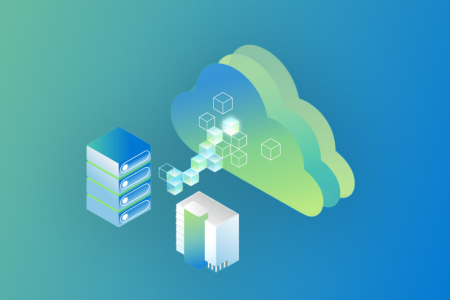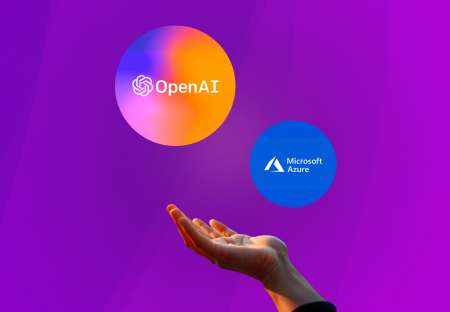In the last several years, as businesses adopted DevOps and continuous testing practices to become more agile, cloud infrastructure for Microservices has become more and more common. Leading internet businesses have abandoned monolithic architectures in favor of cloud native infrastructure for microservices, including Amazon, Netflix, PayPal, Twitter, and Uber.
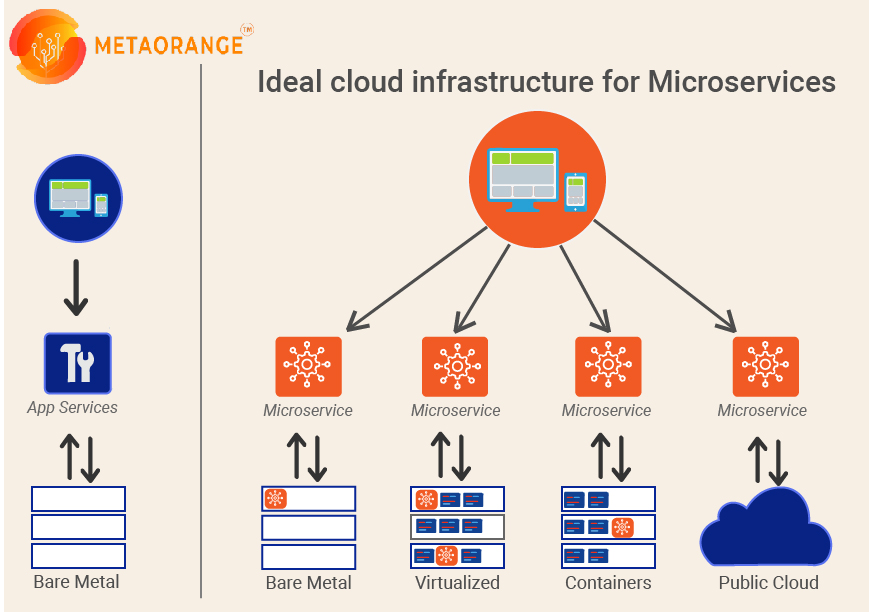
Cloud Native Microservices Security: Safeguarding Your Applications
The programs that make up the monolithic architecture were created as sizable, independent components. These applications are difficult to alter because of how integrated the entire system is. An entirely new version of the program will probably need to be developed and released even if the code is only slightly altered. Scaling monolithic apps is especially challenging since doing so would mean scaling the entire application.
Microservices use a modular approach to software development to solve the issues with a monolithic architecture. In plain English, microservices rethink applications as a collection of several distinct, linked services. Developers deploy each service individually, and each service executes a unique workflow. The services may be created in different programming languages and can store and process data in various ways as required.
Cloud and Microservices
When investing in its digital future, cloud solutions and cloud nativity or cloud native infrastructure for microservices are often the smartest decisions a corporation can make.
On the other hand, a great microservice design offers many worthwhile advantages that also apply to the cloud. Furthermore, it is the most cloud-ready architecture available, designed to integrate quickly and seamlessly with the majority of cloud solutions.
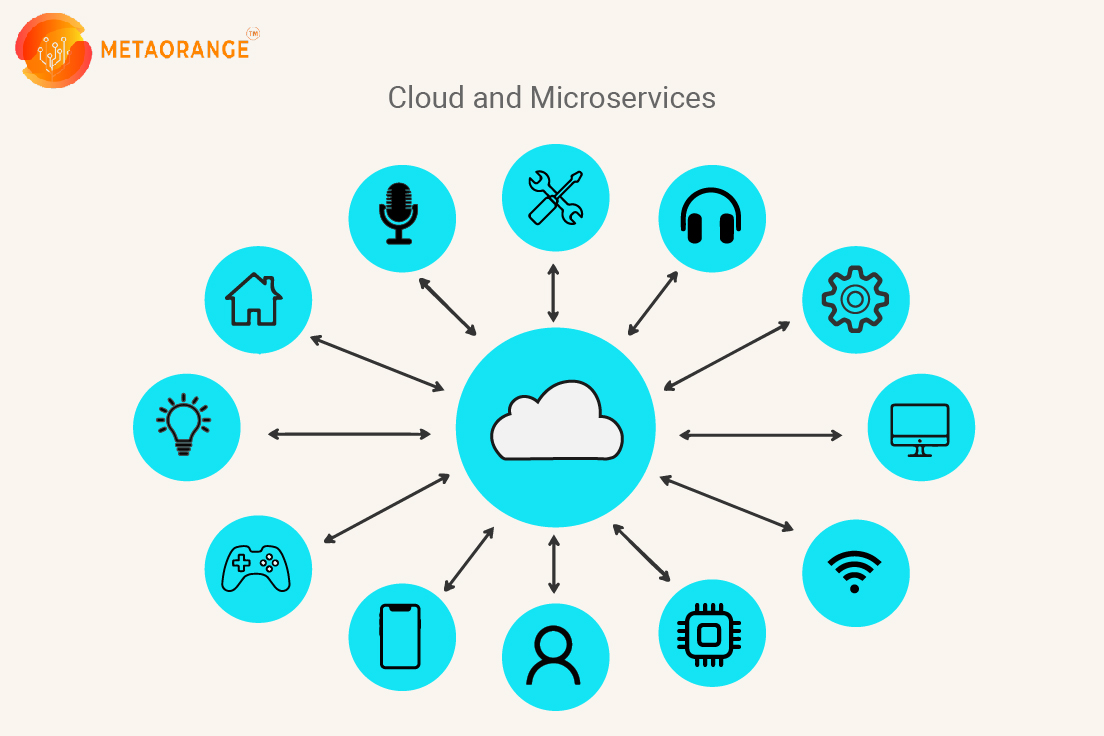
When an application is organized with many loosely coupled services it is using microservice architecture, which is another variation of the service-oriented architecture. Its structure divides the code into separate services. Although these services are autonomous activities, a system of independent, communicating services uses their output as input.
Changing your organization’s architecture to a microservices one on the cloud may be a game-changer. Business objectives should always be the deciding factor when choosing a microservice architecture, but Refactoring combined with this architecture allows you to decouple the domain functionality into smaller, more manageable groups, which is a huge benefit and makes development and maintenance much simpler.
Benefits of Cloud
- Elasticity Acquiring resources when you require them and releasing them as you no longer require them. You want to automate this on the cloud.
- Scalability The requirement for successful, expanding systems frequently rises over time. A scalable system may change to accommodate this increased degree of demand.
- Availability It speaks about systems that are trustworthy enough to run without interruption all the time. They have undergone extensive testing, and occasionally superfluous parts are included.
- Resilience The capacity of a system to bounce back after a failure brought on by load, assaults, or failures.
- Flexibility We may assure more effective version handling and flow separation at the code level by using a simple, template-based approach.
- Services with Autonomy Attaining a total separation at the service level allows the
- Decentralized Administration Since each microservice would be autonomously controlled, each team could select the ideal tool for the task at hand.
- Failure Isolation We may reduce dependencies by letting each service be accountable solely for its own failures.
- Auto-Provisioning By enabling each microservice’s predetermined/automatic sizing dependent on load.
- Using DevOps to ensure continuous delivery Utilizing load testing, automated test scripts, Terraform templates, and enhanced deployment quality assurance cycles.
Microservices on the cloud (AWS)
For Relevant Software, choosing microservices on AWS (one of the most popular cloud service providers) can be the right move. It’s good to use comprehensive guidelines on developing containerized microservices using Docker containers on AWS, and deploying Java and Node.js microservices on Amazon EC2. This can construct scalable, economical, and highly effective infrastructures for organizations while adhering to best practices.
This is how AWS’s fundamental microservice architecture looks:
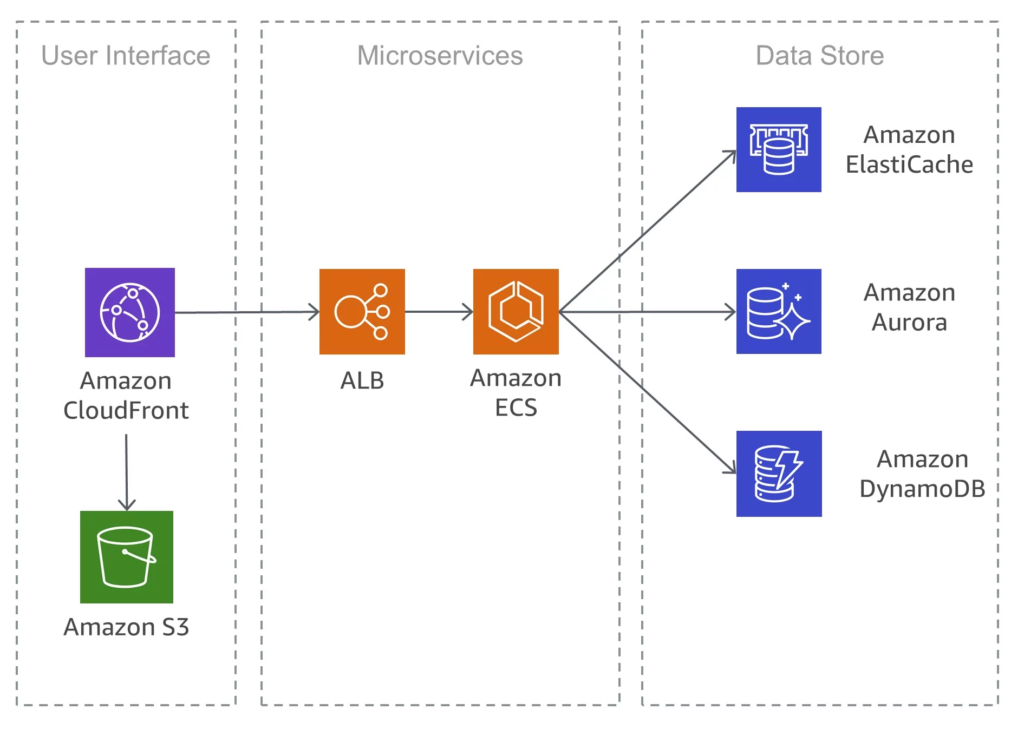
Static material is kept in Amazon S3 while user instances operate on the AWS CloudFront CDN. The Amazon Automatic Load Balancer (ALB) receives incoming traffic and routes it to the Kubernetes cluster with Docker containers running microservices at Amazon ECS.
ElasticCache stores the data in a cache and stores it in any database. It is including Aurora, RDS, and DynamoDB based on the need of the business.
Through the use of Cloud Front CDN, ECS, and caching, this process guarantees unrestricted front-end scalability, application resiliency, and safe data storage.
Modern online applications commonly use REST or RESTful APIs to communicate between their front end, built in one of the JavaScript frameworks, and their back end. Companies often utilize a Content Delivery Network (CDN) such as Amazon CloudFront to deliver static content, which they store in object storage like Amazon S3. Therefore, when end-users connect to an app via the edge node, they experience low latency.”
AWS offers two key strategies to enable the steady operation of RESTful APIs: managed Kubernetes clusters with Docker containers with AWS Fargate and serverless computing with AWS Lambda.
For Infrastructure as code, one can go for AWS CloudFormation. Additionally, if you are in multi or hybrid cloud Terraform can be a good option.
Summary
Microservices are a great option for creating, maintaining, and upgrading scalable and resilient applications. If you have the required knowledge and are able to manage your infrastructure using an in-house or remote team to maximize the cost-efficiency of operations, cloud offers a ton’s of managed building blocks for handling every aspect of a cloud native microservices implementation. It also offers all the tools required to replace these components with open-source alternatives.
Learn More: Application Modernization Services of Metaorange Digital



